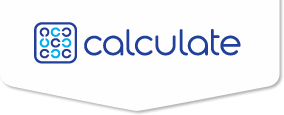Looking to Recruit Adult Students? Good News: They’re Telling Us How

Institutional websites matter (perhaps more than anything else); prospective students search for schools online; they look for specific information, which they fully expect us to deliver.
A recent report by G/O Media reflects more of the same findings, specific to adult learners. The firm canvassed a broad segment of students ages 18-100 (yes, up to 100!) who attend 2- and 4-year institutions and who are enrolled in either full- or part-time graduate and undergraduate programs.
This “across-the-board” perspective can simplify the work of enrollment managers, especially as we come to the close of one recruitment cycle and the start of another.
What They Tell Us
Here’s what we know, followed by some applicable tactics
- 37% of adult students are motivated by career opportunities.They are specific in their goals, so we need to market accordingly. Showcase student and alumni career success, but in a way students want to hear: through the words and experiences of actual people (not the institution).
- Their ultimate decision comes down to three considerations: academic programs, cost, and location. Make sure these are easily found on your website (see website navigation below); highlight affordability, outcomes of success, and convenience in all your adult learner marketing (as long as it’s true, of course).
- Social media matters : 62% report they are most likely to follow an institution’s Facebook page, as opposed to other social media sites. 52% say they want to see posts about the program they’re interested in. Use this guideline when developing content and find innovative ways to share your key selling points program by program.
The Big Takeaway
Report after report cites an institution’s website as its most important marketing feature. Many schools lose prospective students due to cluttered and disorganized sites. We need to look at websites differently: strategy, navigation, and content should be the primary drivers, not design (design should support, not dictate).
Our mantra at Calculate is, “Put the user first.” Create a website that satisfies their needs, one that is lean in content, easy to navigate, and filled with engagement opportunities. A few eye-opening stats:
- 42% of adult learners say an institution’s website is the most influential digital platform (the stat is even higher with high school students: nearly 80%)
- 32% will leave a school’s website if it has poor navigation; 33% will leave if there’s not enough information about their program of interest; 20% will leave if the language about the school or program is vague. Think about it: you could lose up to 85% of your prospective students with a messy, cluttered site.
- They tell us what they’re looking for: 56% visit a website to see if their major exists — make sure your list of majors is easy to find and that every major has a dynamic program page; after that, users want tuition & financial aid information.
- Like traditional undergraduates, adult learners search for colleges online, mostly through traditional search engines (53%). Do all your majors come up in a search? This is where Search Engine Optimization comes into play. Your website must include SEO-friendly content and headlines in order to be found online during a search. Revise your web content accordingly.
Keep What Works & Shift Toward Digital
It’s clear that the digital world is here to stay … and grow. Higher education needs to shift towards digital marketing. That doesn’t mean all tactics need to change, though. We’ve all seen how a smart branding campaign can elevate awareness and change perceptions. The G/O Media report reveals that the top three ways students connect to an institution are decidedly “traditional:” via email (41%), a campus visit (40%), or through a word-of-mouth referral (38%).
But we do need to listen to what students say about how they search for and assess colleges.
There’s enough stacked against the industry as it is (rising costs, declining demographics, a stubborn economy) — we need to reach prospective students where and how they want.

